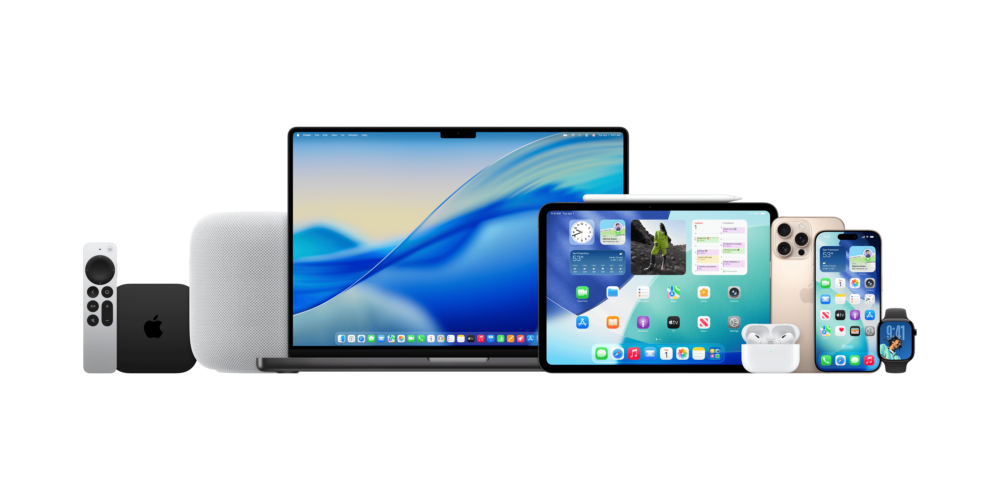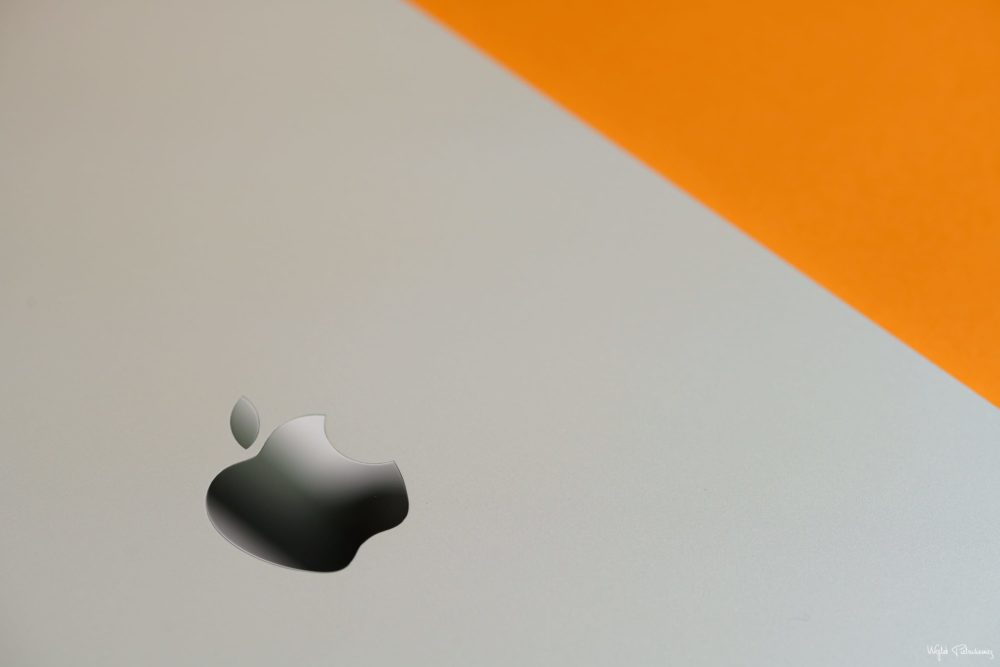Wersje RC systemów 26.1
Dziś wieczorem Apple opublikowało wersje RC wszystkich sytemów 26.1. Oznacza to, że oficjalne aktualizacje są już coraz bliżej.
Minął tydzień od ostatnich – czwartych wersji beta, a już pojawiły się Release Candidate.
Najważniejsza nowość w niemal wszystkich nadchodzących aktualizacjach to możliwość stonowania przezroczystości Liquid Glass. Apple zdecydowanie nie dopracował tego wyglądu i choć deweloperzy w fazie testów przed publiczną premierą systemów z numerem 26 o tym powszechnie mówili, dopiero oficjalna wersja i dołączenie do głosu zwykłych użytkowników zmusił Apple, aby coś w końcu z tym zrobić.
Ponieważ jesteśmy już w fazie wersji RC, możemy się spodziewać, że niedługo systemy 26.1 zostaną udostępnione publicznie, być może już na początku przyszłego tygodnia.
#AppleTV #AppleVisionPro #AppleWatch #iOS #iOS26 #iPad #iPadOS #iPadOS26 #iPhone #Mac #macOS #macOS26 #Tahoe #tvOS #tvOS26 #visionOS #visionOS26 #watchOS #watchOS26
Wersje RC systemów 26.1
Dziś wieczorem Apple opublikowało wersje RC wszystkich sytemów 26.1. Oznacza to, że oficjalne aktualizacje są już coraz bliżej.
Minął tydzień od ostatnich – czwartych wersji beta, a już pojawiły się Release Candidate.
Najważniejsza nowość w niemal wszystkich nadchodzących aktualizacjach to możliwość stonowania przezroczystości Liquid Glass. Apple zdecydowanie nie dopracował tego wyglądu i choć deweloperzy w fazie testów przed publiczną premierą systemów z numerem 26 o tym powszechnie mówili, dopiero oficjalna wersja i dołączenie do głosu zwykłych użytkowników zmusił Apple, aby coś w końcu z tym zrobić.
Ponieważ jesteśmy już w fazie wersji RC, możemy się spodziewać, że niedługo systemy 26.1 zostaną udostępnione publicznie, być może już na początku przyszłego tygodnia.
#AppleTV #AppleVisionPro #AppleWatch #iOS #iOS26 #iPad #iPadOS #iPadOS26 #iPhone #Mac #macOS #macOS26 #Tahoe #tvOS #tvOS26 #visionOS #visionOS26 #watchOS #watchOS26
Apple szykuje cztery nowe aplikacje Pro na iPada
Według najnowszego raportu Apple planuje rozszerzyć ofertę profesjonalnych aplikacji dla iPada o cztery nowe aplikacje: Pixelmator Pro, MainStage, Motion oraz Compressor, podaje serwis 9to5Mac.
Dołączą one do dostępnych już na iPadzie Final Cut Pro i Logic Pro.
Informację odkrył współpracownik MacRumors, Aaron Perris, który znalazł w App Store nowe identyfikatory aplikacji powiązane z tymi tytułami. Co nowego?
- Compressor – narzędzie do eksportu i kodowania wideo i audio, uzupełniające Final Cut Pro.
- Motion – aplikacja do tworzenia animacji, efektów wizualnych i przejść wideo.
- MainStage – towarzysz Logic Pro, stworzony do występów na żywo i personalizacji instrumentów scenicznych.
- Pixelmator Pro – rozbudowana wersja popularnego edytora graficznego, prawdopodobnie zbliżona funkcjonalnie do wersji dla macOS.
Apple przejęło firmę Pixelmator w listopadzie 2024 roku, więc premiera profesjonalnej wersji na iPada wydaje się naturalnym krokiem.
Pierwsze benchmarki Apple M5 w nowym iPad Pro 11” 1 TB (late 2025)
Choć data premiery nie jest jeszcze znana, pojawienie się tych aplikacji oznaczałoby duże wzmocnienie ekosystemu iPadOS, szczególnie po premierze nowego iPada Pro z procesorem Apple M5.
#aplikacjeApple #aplikacjePro #Apple #AppleM5 #AppleNews #Compressor #FinalCutPro #iPad #iPadOS #iPadPro #kreatywność #LogicPro #Mainstage #montażwideo #motion #PixelmatorPro #produkcjamuzyczna #technologia
Apple szykuje cztery nowe aplikacje Pro na iPada
Według najnowszego raportu Apple planuje rozszerzyć ofertę profesjonalnych aplikacji dla iPada o cztery nowe aplikacje: Pixelmator Pro, MainStage, Motion oraz Compressor, podaje serwis 9to5Mac.
Dołączą one do dostępnych już na iPadzie Final Cut Pro i Logic Pro.
Informację odkrył współpracownik MacRumors, Aaron Perris, który znalazł w App Store nowe identyfikatory aplikacji powiązane z tymi tytułami. Co nowego?
- Compressor – narzędzie do eksportu i kodowania wideo i audio, uzupełniające Final Cut Pro.
- Motion – aplikacja do tworzenia animacji, efektów wizualnych i przejść wideo.
- MainStage – towarzysz Logic Pro, stworzony do występów na żywo i personalizacji instrumentów scenicznych.
- Pixelmator Pro – rozbudowana wersja popularnego edytora graficznego, prawdopodobnie zbliżona funkcjonalnie do wersji dla macOS.
Apple przejęło firmę Pixelmator w listopadzie 2024 roku, więc premiera profesjonalnej wersji na iPada wydaje się naturalnym krokiem.
Pierwsze benchmarki Apple M5 w nowym iPad Pro 11” 1 TB (late 2025)
Choć data premiery nie jest jeszcze znana, pojawienie się tych aplikacji oznaczałoby duże wzmocnienie ekosystemu iPadOS, szczególnie po premierze nowego iPada Pro z procesorem Apple M5.
#aplikacjeApple #aplikacjePro #Apple #AppleM5 #AppleNews #Compressor #FinalCutPro #iPad #iPadOS #iPadPro #kreatywność #LogicPro #Mainstage #montażwideo #motion #PixelmatorPro #produkcjamuzyczna #technologia
#TIL you can double-tap windowed apps in #iPadOS 26 to toggle between full screen and windowed state. This makes a total of 6 different ways to change window size.
1. use the green traffic light button top left
2. finch the window to the top = make full screen, finch down = make windowed
3. drag active edge, this gives you control over the actual size
4. when in full screen, use top menu bar > window > preferred option
5. double-tap
6. globe-key + arrows with keyboard
#TIL you can double-tap windowed apps in #iPadOS 26 to toggle between full screen and windowed state. This makes a total of 6 different ways to change window size.
1. use the green traffic light button top left
2. finch the window to the top = make full screen, finch down = make windowed
3. drag active edge, this gives you control over the actual size
4. when in full screen, use top menu bar > window > preferred option
5. double-tap
6. globe-key + arrows with keyboard
AppMigrationKit – nowy framework do przenoszenia danych aplikacji między iOS a Androidem
Apple wprowadza AppMigrationKit – nowy framework do przenoszenia danych aplikacji między iPhone’em a Androidem.
Apple przygotowuje nowy system AppMigrationKit, który umożliwi łatwe przenoszenie danych aplikacji między iOS a Androidem. Framework trafi do urządzeń z iOS 26.1 i iPadOS 26.1 i ma uprościć proces migracji danych z aplikacji firm trzecich.
Nowe narzędzie pozwoli deweloperom zdefiniować, czy ich aplikacje mogą eksportować, importować lub wykonywać obie operacje podczas transferu. Po aktywacji opcji „Transfer to Android” w ustawieniach iPhone’a, użytkownik będzie mógł w jednym kroku przenieść dane aplikacji na urządzenie z Androidem.
Funkcja działa dwukierunkowo — Google przygotowuje analogiczne narzędzie „Transfer to iPhone”, co umożliwi pełną migrację między platformami.
AppMigrationKit jest obecnie w fazie beta, ale publikacja oficjalnej dokumentacji sugeruje, że jego premiera nastąpi wkrótce.
#Android #aplikacjeMobilne #Apple #AppleVsAndroid #AppMigrationKit #iOS261 #iPadOS #iPhone #migracjaDanych #technologia #transferDanych
AppMigrationKit – nowy framework do przenoszenia danych aplikacji między iOS a Androidem
Apple wprowadza AppMigrationKit – nowy framework do przenoszenia danych aplikacji między iPhone’em a Androidem.
Apple przygotowuje nowy system AppMigrationKit, który umożliwi łatwe przenoszenie danych aplikacji między iOS a Androidem. Framework trafi do urządzeń z iOS 26.1 i iPadOS 26.1 i ma uprościć proces migracji danych z aplikacji firm trzecich.
Nowe narzędzie pozwoli deweloperom zdefiniować, czy ich aplikacje mogą eksportować, importować lub wykonywać obie operacje podczas transferu. Po aktywacji opcji „Transfer to Android” w ustawieniach iPhone’a, użytkownik będzie mógł w jednym kroku przenieść dane aplikacji na urządzenie z Androidem.
Funkcja działa dwukierunkowo — Google przygotowuje analogiczne narzędzie „Transfer to iPhone”, co umożliwi pełną migrację między platformami.
AppMigrationKit jest obecnie w fazie beta, ale publikacja oficjalnej dokumentacji sugeruje, że jego premiera nastąpi wkrótce.
#Android #aplikacjeMobilne #Apple #AppleVsAndroid #AppMigrationKit #iOS261 #iPadOS #iPhone #migracjaDanych #technologia #transferDanych
I thought windowing in iPadOS 26 would be a bigger deal than it’s been so far
Barely two weeks after installing Apple’s iPadOS 26 on my iPad mini 6, the feature in this operating-system release that I thought would make the biggest difference in my tablet computing has been among the least remarkable in my daily use.
This release’s new Windowed Apps mode–Apple’s rebooted attempt to give the iPad’s larger-screen computing experience an interface architecture beyond a scaled-up version of an iPhone’s–has been easy for me to overlook for two reasons.

One is that even after choosing to enable it after installing iPadOS 26, apps continue to launch in full-screen mode. The only ones that look visibly different are iOS apps, which no longer fill the screen when scaled up and instead leave columns of the home screen visible on either side–an effect I found distracting.
To shrink an iOS app to the point where you have room for other apps on the screen, you have to tap and hold a black curve at its bottom right corner. Then you can repeat this with other apps, which iPadOS will cluster in a single layer that appears in place of whatever full-screen app you had just opened up.
But you can also open an individual windowed app above a full-screen app by selecting it from the Dock or the App Library, which is how you can see the Calculator app that Apple finally brought to the iPad with 2024’s iPadOS 18 in front of Safari in the picture above.
So far, I’ve tried using iPadOS 26’s windowed-apps layer to arrange two iOS apps (Bluesky as well as the Verizon Home app I use to manage our latest WiFi router) with three iPadOS apps that seem like they don’t need full-screen treatment: Apple Maps, YouTube, and Calculator.
This works, but it can get a little weird. The system doesn’t always provide much of a sense of depth when you position a windowed app above a full-screen app–see how Calculator looks like it’s stuck right on top of Safari in the photo above? And the Exposé view of open apps shows a maximum of four windowed apps, requiring a swipe to the left to see any others you’ve windowed this way.
Plus, having all of these visually miniaturized programs confined to one layer (except when you pop one or two above a full-screen app) reminds me not of windowing in macOS but of a much older Apple UX: how Desk Accessories worked in System 6.
The second big reason why Windowed Apps seems a bit weak to me can’t be fixed with an interface tweak: I’m using this feature on the smallest-screen iPad now sold, with an 8.3-in. display not that much bigger than the 6.9-in. display of an iPhone 17 Pro Max. I’m sure the larger screen of an iPad Air or iPad Pro would serve as a better stage for this mode.
But I’m too fond of having a tablet that I can easily carry around the house, so that constraint isn’t going away. And for all the quirks I’m discovering with Windowed Apps on my iPad mini’s smaller display, this feature does represent a clear improvement over the Split View and Slide Over multitasking modes that I found far too easy to invoke by accident.
Zooming out a bit, this feature’s arrival also represents a clear break from years and years of Apple neglecting its tablet operating system. That by itself is an undeniable upgrade, even if this year’s initial results have some janky aspects.
#iOSAppsInIPadOS #iPad #iPadMini #iPadMini6 #iPadOS #iPadOS26 #iPhoneAppsOnIPad #LiquidGlass #tablet #tabletComputing #UI #UX #WindowedApps #windowing


I thought windowing in iPadOS 26 would be a bigger deal than it’s been so far
Barely two weeks after installing Apple’s iPadOS 26 on my iPad mini 6, the feature in this operating-system release that I thought would make the biggest difference in my tablet computing has been among the least remarkable in my daily use.
This release’s new Windowed Apps mode–Apple’s rebooted attempt to give the iPad’s larger-screen computing experience an interface architecture beyond a scaled-up version of an iPhone’s–has been easy for me to overlook for two reasons.

One is that even after choosing to enable it after installing iPadOS 26, apps continue to launch in full-screen mode. The only ones that look visibly different are iOS apps, which no longer fill the screen when scaled up and instead leave columns of the home screen visible on either side–an effect I found distracting.
To shrink an iOS app to the point where you have room for other apps on the screen, you have to tap and hold a black curve at its bottom right corner. Then you can repeat this with other apps, which iPadOS will cluster in a single layer that appears in place of whatever full-screen app you had just opened up.
But you can also open an individual windowed app above a full-screen app by selecting it from the Dock or the App Library, which is how you can see the Calculator app that Apple finally brought to the iPad with 2024’s iPadOS 18 in front of Safari in the picture above.
So far, I’ve tried using iPadOS 26’s windowed-apps layer to arrange two iOS apps (Bluesky as well as the Verizon Home app I use to manage our latest WiFi router) with three iPadOS apps that seem like they don’t need full-screen treatment: Apple Maps, YouTube, and Calculator.
This works, but it can get a little weird. The system doesn’t always provide much of a sense of depth when you position a windowed app above a full-screen app–see how Calculator looks like it’s stuck right on top of Safari in the photo above? And the Exposé view of open apps shows a maximum of four windowed apps, requiring a swipe to the left to see any others you’ve windowed this way.
Plus, having all of these visually miniaturized programs confined to one layer (except when you pop one or two above a full-screen app) reminds me not of windowing in macOS but of a much older Apple UX: how Desk Accessories worked in System 6.
The second big reason why Windowed Apps seems a bit weak to me can’t be fixed with an interface tweak: I’m using this feature on the smallest-screen iPad now sold, with an 8.3-in. display not that much bigger than the 6.9-in. display of an iPhone 17 Pro Max. I’m sure the larger screen of an iPad Air or iPad Pro would serve as a better stage for this mode.
But I’m too fond of having a tablet that I can easily carry around the house, so that constraint isn’t going away. And for all the quirks I’m discovering with Windowed Apps on my iPad mini’s smaller display, this feature does represent a clear improvement over the Split View and Slide Over multitasking modes that I found far too easy to invoke by accident.
Zooming out a bit, this feature’s arrival also represents a clear break from years and years of Apple neglecting its tablet operating system. That by itself is an undeniable upgrade, even if this year’s initial results have some janky aspects.
#iOSAppsInIPadOS #iPad #iPadMini #iPadMini6 #iPadOS #iPadOS26 #iPhoneAppsOnIPad #LiquidGlass #tablet #tabletComputing #UI #UX #WindowedApps #windowing






